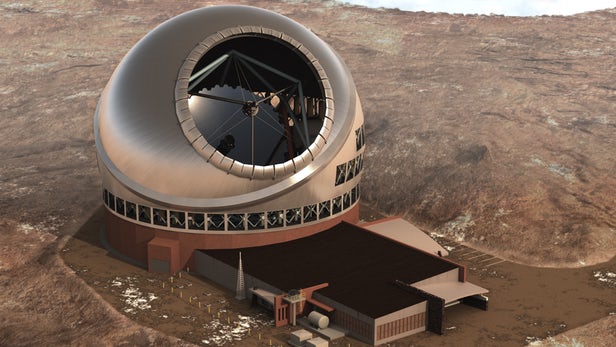The 0.7 m GROWTH-India telescope at the Indian Astronomical Observatory located in Hanle, Ladakh, has made its first science observation which is a follow-up study of a nova explosion. Novae are explosive events involving violent eruptions on the surface of white dwarf stars, leading to temporary increase in brightness of the star. Unlike a supernova, the star does not go on to die but returns to its earlier state after the explosion. A report on this published in The Astronomer’s Telegram notes the magnitude of the nova explosion first identified by Darnley et al as it varies, during November 8 to November 10.
First science observation
The GROWTH-India telescope was commissioned six months ago soon after which it saw first light, on the night of June 12. “The telescope has been taking readings since then, and this is the first ‘follow-up’ work. We are happy to see this first science observation,” said G C Anupama, who Professor-in-Charge of the Indian Astronomical Observatory and is based at Indian Institute of Astrophysics (IIAP), Bengaluru.
The celestial object was first noticed by a different group which saw the nova explosion. “We then pointed our telescope in that direction and measured the brightness. We found that it was fading at the rate expected for such events. This is a small step in astronomy but a big leap for us, because it is the first scientific result obtained by this telescope,” said Varun Bhalerao a faculty member at IIT Bombay and a Principal Investigator of the project along with Professor Anupama.
This recurrent nova, named M31N-2008, has been observed to erupt several times, the most recent eruption happening in November 2018. Recurrent nova systems are interesting because they are candidates for progenitors of Type Ia supernovae. “We took follow-up images with the GROWTH-India telescope. The observations were made in different optical bands. The nova was seen to decline rapidly in brightness, by 1 – 1.5 magnitudes in the span of 2 days,” says Shubham Srivastav, post-doctoral fellow at the physics department of IIT Bombay (IITB)
Robotic eye
The telescope is potentially fully robotic and can operate on its own, but the way these readings were taken has only partly used its potential for automation. “The group sitting in IIT Bombay worked through Bengaluru’s IIAP to control the telescope. While the IITB-IIAP link was through regular internet connection, the one from IIAP to the telescope in Ladakh was through a satellite link,” said Professor Bhalerao. A typical professional telescope has a field of about 0.1 square degrees.
This telescope has a field that is five to six times larger. It can ‘slew’ or move its focus from one part of the sky to another in just about 10-15 seconds and its camera can view stellar objects that are thousands to millions of light years away.
Threefold goals
The GROWTH-India telescope is part of the Global Relay of Observatories Watching Transients Happen. Its goals are threefold: (1) Search for explosions in the optical regime whenever LIGO group detects a Binary Neutron Star merger (2) study nearby young supernova explosions. (3) Study nearby asteroids.
Transient phenomena such as supernovae are important parts of time-domain astronomy which is a less-explored frontier in astronomy. “Such an explosion is when the inner material of the star is thrown out. There is no other way we can actually see what is inside a star,” explains Prof. Bhalerao.
Source:TH
Image Courtesy:New Atlas
You may also like
-
New Heat-Based Approach To Cancer Treatment Can Reduce Chemotherapy Doses
-
Scientists Take A Major Step Towards Unification Of Classical & Quantum Gravity
-
India Graphene Engineering and Innovation Centre (IGEIC) Under the Vision of Viksit Bharat@2047 Launched
-
New High-Performance Gas Sensor can Monitor Low Level Nitrogen Oxides Pollution
-
Antidepressant Drug can be Repurposed for Treating Breast Cancer
